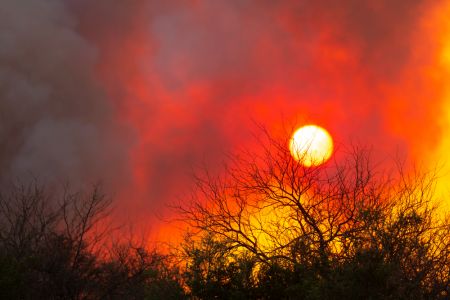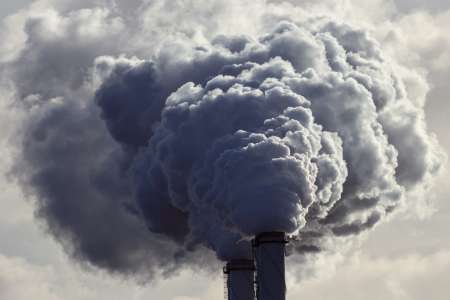Planetary Boundaries We Need to Respect
There are limits to how much we can damage the planet and not render our world unlivable. These are called Planetary Boundaries and they should be understood as vitally important.
07/25/2023

What You Need to Know about Planetary Boundaries
Planetary Boundaries are lines related to the planet’s health that we should not cross or face severe consequences to our Earth’s ecosystems. The concepts were first proposed in 2009 by Johan Rockström, the Director of the Stockholm Resilience Centre, along with an international team of leading environmental scientists.
Researchers set measurable borders to define how much humans can change things on Earth before destabilizing the environment. The safe range looks at what level of human impact interferes with the planet’s natural systems. The original 2009 paper identified 9 essential planetary boundaries related to critical Earth processes:
1. Climate Change: Due to extensive media mentions, this is the most well-known boundary. Crossing this would lead to a much warmer Earth with radical shifts in climate patterns, sea-level rise, and, very likely, the collapse of glaciers and ice sheets.
2. Ocean Acidification: As we release more CO2 into the atmosphere, the oceans absorb it more, making them more acidic. The lowered pH harms many species, especially corals, mollusks, and some plankton, which can no longer source the calcium carbonate needed to form shells and skeletons.
3. Stratospheric Ozone Depletion: The ozone layer in the stratosphere protects life from harmful ultraviolet (UV) radiation. Ozone depletion, largely due to the use of certain chemicals, could lead to higher UV radiation levels at the Earth’s surface.
4. Biogeochemical Flows: This refers to the cycles of substances like phosphorus and nitrogen, which are critical for life. Disrupting these cycles can cause various problems, from water pollution to the creation of ‘dead zones’ in bodies of water.
5. Atmospheric Aerosol Loading: Aerosols, which come from both natural and human-made sources, influence climate and can also negatively affect health. High concentrations can lead to respiratory problems in humans and animals.
6. Freshwater Use: Overusing freshwater resources can lead to water shortages, desertification, and changes to the Earth’s climate systems.
7. Land System Change: This boundary refers to land conversion for agriculture or urbanization. Large-scale deforestation is ongoing, leading to a loss of biodiversity and disruption of carbon storage.
8. Biodiversity Loss: High species extinction rates are disrupting ecosystems and the services they provide.
9. Novel Entities: Chemical pollution, radioactive materials, and others. These substances often cause unexpected, harmful impacts on living things and the environment.
Each of the Boundaries Has 3 Defined Zones of Increasing Risk
Safe Zone
This zone is sustainable as it exists, and levels of human-caused and natural changes will not push vital Earth systems out of the stable Holocene state of the last 10,000 years. This is important, as this is the stable zone in which complex human civilizations flourished.
Danger Zone
This is a risky zone where approaching tipping points become increasingly likely. Urgent precautions are warranted to steer anthropogenic (human-made) changes back to the safe zone before irreversible shifts are triggered.
High-Risk Zone
A danger zone beyond safe limits where the probability of tipping the Earth’s support systems into a new and catastrophic state becomes very high. Once exceeded, there will be issues that will not be open to remedial actions. Exceeding boundaries in this zone must be prevented through immediate global action.
Understand Why They Are So Important to You
Staying within the identified planetary boundaries reduces the risk of humanity inadvertently triggering catastrophic and irreversible environmental changes at the global level through activities such as fossil fuel emissions, deforestation, resource overexploitation, and biodiversity loss. Such large-scale environmental shifts will profoundly disrupt the stability of the planet’s climate systems, biosphere, and ecosystems. These things have allowed human civilization to prosper in the relatively stable but very short geological epoch of the Holocene for the past 10,000-12,000 years.
If we keep pushing past the planet’s safe limits, problems with climate change, extinctions, pollution, and other issues will worsen and possibly threaten humanity. These are not theoretical concepts; they are the conditions we are now beginning to see and live through. Planetary boundaries and lines must not continue to be ignored if we are to reduce the existential risks of human-induced destabilization of the Earth that human societies so depend on.
Be Concerned! Six of the Nine Boundaries Have Now Been Exceeded
- Climate Change – CO2 levels have exceeded 415 ppm, far beyond the 350 ppm limit needed for a safe climate. This has already increased global temperatures by over one degree Celsius (1°C) above pre-industrial levels, destabilizing Earth’s climate patterns and increasing extreme weather, wildfires, droughts, floods, and rising sea levels. We all bear witness to these consequences, and they are worsening.
- Biodiversity Loss – Current species extinction rates are 100 to 1000 times higher than pre-human levels, indicating dangerous levels of biodiversity loss. These levels further undermine ecosystem functioning and raise this boundary into the high-risk zone. Estimates are that the planet will lose upwards of one million species within the coming decades. There is disagreement on this, however, with many scientists stating that there will be far more extinctions.
- Biogeochemical Flows – Heavy disruption of nitrogen and phosphorus cycles due to fertilizer use and pollution has pushed us into the high-risk zone. This causes algal blooms and ocean dead zones, threatening aquatic and terrestrial ecosystems across the planet.
- Land System Change – Over 20% of the Earth’s land surface has been converted to human use, exceeding the suggested 15% limit and putting us in the danger zone for this boundary.
- Freshwater Use – Pressure on water resources from irrigation, industry, and households makes water scarcity a growing concern. Regional depletion of rivers and groundwater aquifers is worrying. Water scarcity in many regions is growing due to overuse and contamination, with unsustainable withdrawals draining essential lakes, rivers, and groundwater aquifers.
- Novel Entities – The threats of plastic and microplastic pollutants, industrial chemicals, and nuclear waste are dramatically rising and are in danger zones.
Three of the Nine Boundaries Remain Safe for Now
1.) Atmospheric Aerosol Loading – This boundary needs better assessments, but aerosol pollution from human activities is a growing concern.
2.) Ocean Acidification – Increased carbon absorption acidifies the oceans, reduces pH, and changes marine water chemistry. Although the increased CO2 absorption has already dropped ocean surface pH by 0.1 units, it is still in the safe zone. However, regionally, it poses risks to coral reefs, shellfish, plankton, and entire coastal ecosystems.
3.) Stratospheric Ozone Depletion – The ozone layer boundary was at risk in the 1990s when ozone-depleting chemicals caused severe stratospheric ozone depletion. The implementation of the Montreal Protocol prevented further ozone loss, allowing this boundary to return to the safe zone gradually. This shows that collaborative international efforts can effectively address boundary violations.
The lack of finite definitions around aerosol loading and novel entities remains a gap in the framework of planetary boundaries. As such, there are uncertainties about quantifying thresholds for emerging pollutants like plastic nanoparticles, organic compounds, heavy metals, and nuclear waste.
It is necessary to understand that the planetary boundaries are tightly coupled. Climate change drives biodiversity loss. Deforestation reduces carbon sequestration and land fertility. Ocean acidification from atmospheric CO2 interacts with deoxygenation to damage marine ecosystems and so on.
The Earth’s systems behave as a complex adaptive whole; exceeding one boundary also triggers feedback that pushes other boundaries over the edge. This systemic interdependence means respecting all global planetary boundaries, which has to be the guiding rule for humanity. Solutions must be found that act on coupled events. For instance, global warming and biodiversity must be restored. Solving one will not necessarily solve the other, and humanity must address both.
While the current global environmental outlook of multiple planetary boundaries being crossed paints a concerning and, honestly, depressing picture, there are evidence-based reasons for hope if humanity collectively mobilizes our innovation, ethics, and cooperation at this crucial moment in history. Although daunting, human ingenuity and technology can absolutely make it possible to proactively transform our economies, industries, infrastructure, lifestyles, and sociocultural values to be ecologically regenerative, socially just, and environmentally sustainable.
We have the knowledge, resources, and emerging solutions to transition our energy systems to renewable sources like wind, solar, and geothermal. Using nature-inspired green technology, we can redesign our cities, transportation systems, and infrastructure. Shifting to ecological and regenerative models of agriculture and forestry can restore ecosystem health while still feeding the world. Circular economic systems can eliminate waste by cycling materials through continuous-use loops. However, reducing environmental hazards like plastics at the source must
Education to spread awareness, appropriate incentives and regulations, and a collective will to act are vital to going forward. We must reevaluate our relationship with nature, moving from exploitation to seeing ourselves as one part of the natural world.
The Montreal Protocol, which saw nations come together to save the ozone layer, is an inspiring case study and precedent. It demonstrates that science-based international cooperation and policy implementation can successfully reverse the damage, even to global-scale challenges like ozone depletion.
This offers hope. However, future success will depend on a joined political will guided by compassion, wisdom, and scientific knowledge. Without governments led by leaders who have the will to act for humanity instead of individual desires, the picture of our future is tragic. Please act in ways that recognize the issues at hand for us and our children and take actions that will put such leaders in place.
With these grave existential risks come tremendous opportunities for changes that must occur to safeguard our planet. The future is not fixed in place. We can create a beautiful world of sustainability, justice, and prosperity for all. Or, we can do nothing and face a world where human existence is impossible. Time is short to commit, and please do!




















